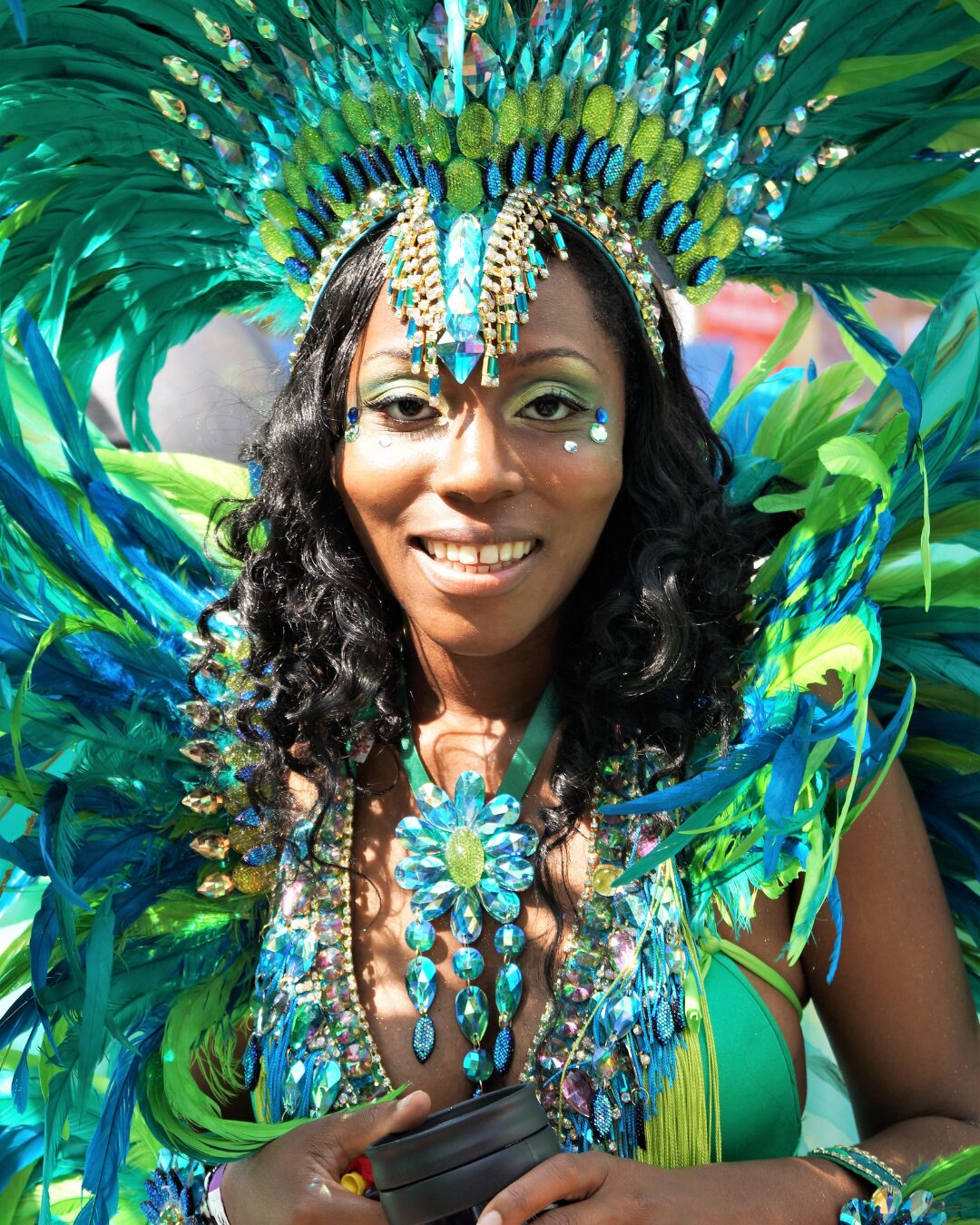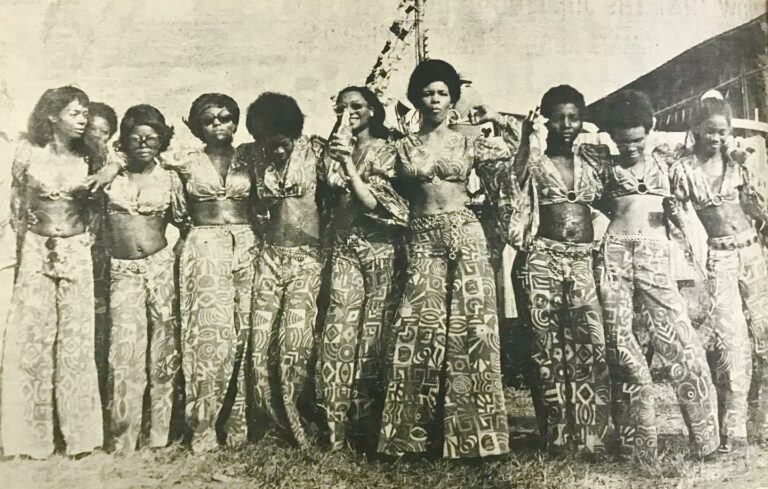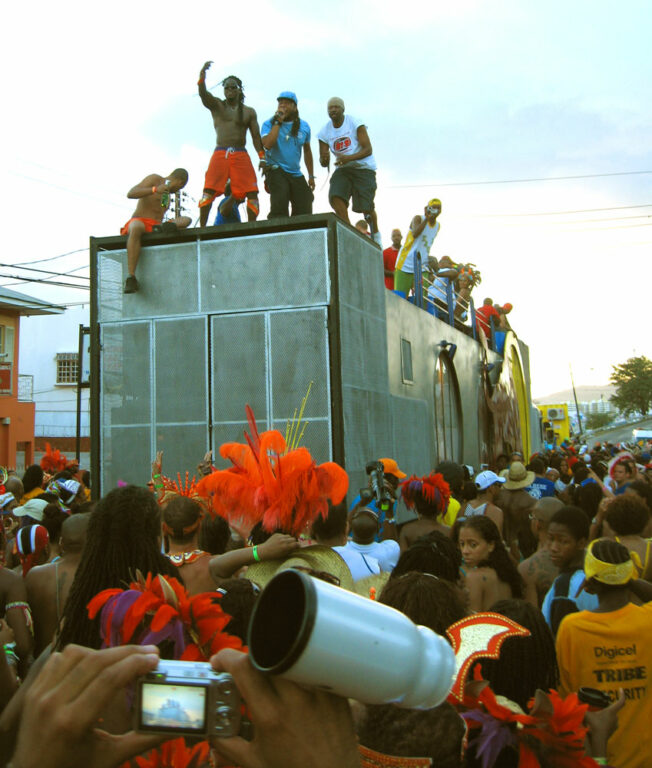
Thanks to the magic and theater of Trinidad Carnival, participants in the parade transform into performers or “masqueraders” ready for the miles long procession through the city streets. Even if you’ve never performed on stage a day in your life, you become a spectacle with your fellow masqueraders, improvising mesmerizing dance movements the entire way through to the final judging stage where all eyes are on you.
It is a most exhilarating feeling to participate in the theater of Trinidad Carnival and one you have to experience to believe.
Trinidad Carnival started in 1783 by French colonists seeking to celebrate the commencement of the Lenten season. Carnival festivities which included balls, dinners and elegant events began from Chritsmas and led up to Ash Wednesday.
Upon emancipation 50 years later, Africans started to participate in the Carnival, incorporating their own traditions such as Canboulay which was a celebration of liberation, freedom of expression and resistance.
This became the Carnival we know and love today and is celebrated on the Monday and Tuesday before Ash Wednesday.

This may refer to the Carnival bandleader who is usually responsible for conceptualizing the theme of the year’s offering and potentially overseeing the entire operation involving costumes, mobile drinks and music trucks for the parade, security and so on. Some Carnival bands incorporate a more technical showcase as they cross the judging stage which one can say may be scripted.
“Masqueraders” are the costumed participants in the parade. They use their costumes as extensions of themselves and wave and twirl them to the rhythm of the sweet soca music. They dance for themselves, for other masqueraders and for their audience of spectators that flock to the streets, peer down at the festivities from rooftops and balconies to get a glance or the ones waiting patiently for them at the final judging stage at the Queens Park Savannah.
Masqueraders take over the streets of the city of Port of Spain for two full days in Trinidad. Not just the roads and pavements, but masqueraders can be found atop rooftops walls and traffic lights around the city. There are many judging points during the parade that culminate to the final judging stage. All bands cross this stage to be judged and hopefully crowned “Band of the Year”. This stage crossing is the highlight for many masqueraders and is also televised. The masqueraders pull out all the stops to entertain the masses.

Design, dance, live music performances, an intermission (break for lunch), a grande finale (“last lap”).
There is so much more to be said about Carnival, it’s major creative contributors over the years and where it’s heading in this new age of Arts and entertainment, but thats all for now!
The Largest Steel Pan Competition in the World: Trinidad PANorama
Interview with Wan-Jung Wei: OISTAT’s Youngest Executive Director


Megan hails from the twin island nation of Trinidad and Tobago. She is a musician, singer/songwriter with a vast technical theatre background and can be called a rockstar of the creative world. Boasting a holistic understanding of multiple Creative Arts spanning a roughly 16 year career, while being an activist who is passionate about the empowerment of girls, womexn and the LGBTQ+ community, Megan exists at the intersection of the Creative and Cultural Industries and social change. She considers herself a citizen of the planet, having traveled considerably during her career, and is energized by her chosen family and professional networks that span the globe. Megan holds a Certificate in Digital Media Studies with a focus in Music Technology, BFA in Performing Arts with a focus in Theater Design and Production, a Master in Arts and Culture Management (hons) and has a vocation for coaching creatives. Megan also loves writing music, gigging, connecting with people of all cultures and prioritizes having the ocean waves underscore her daily life.
Read Full Profile© 2021 TheatreArtLife. All rights reserved.

Thank you so much for reading, but you have now reached your free article limit for this month.
Our contributors are currently writing more articles for you to enjoy.
To keep reading, all you have to do is become a subscriber and then you can read unlimited articles anytime.
Your investment will help us continue to ignite connections across the globe in live entertainment and build this community for industry professionals.